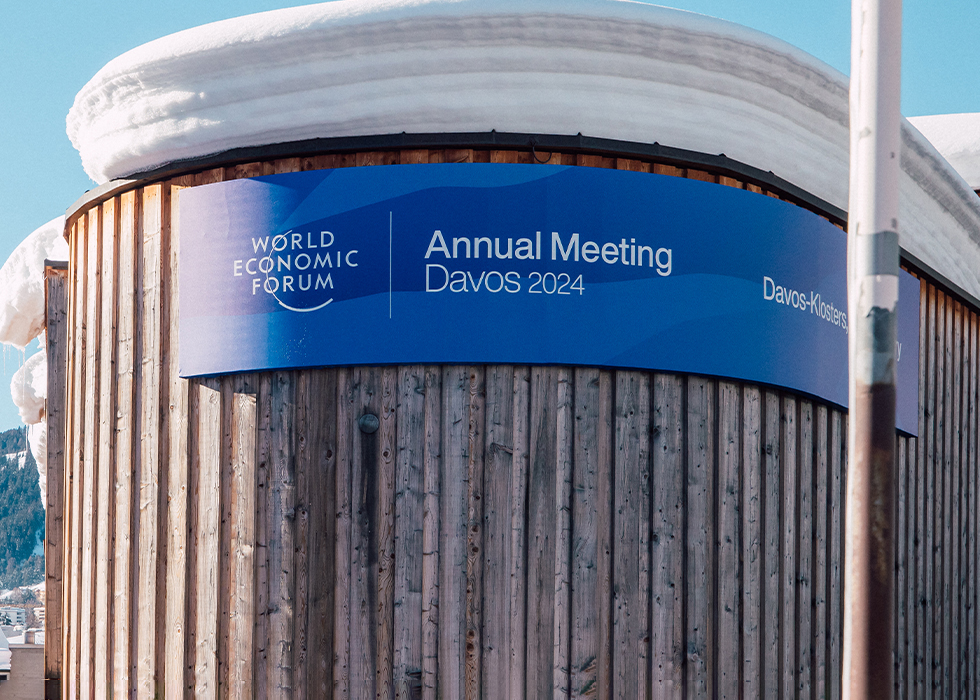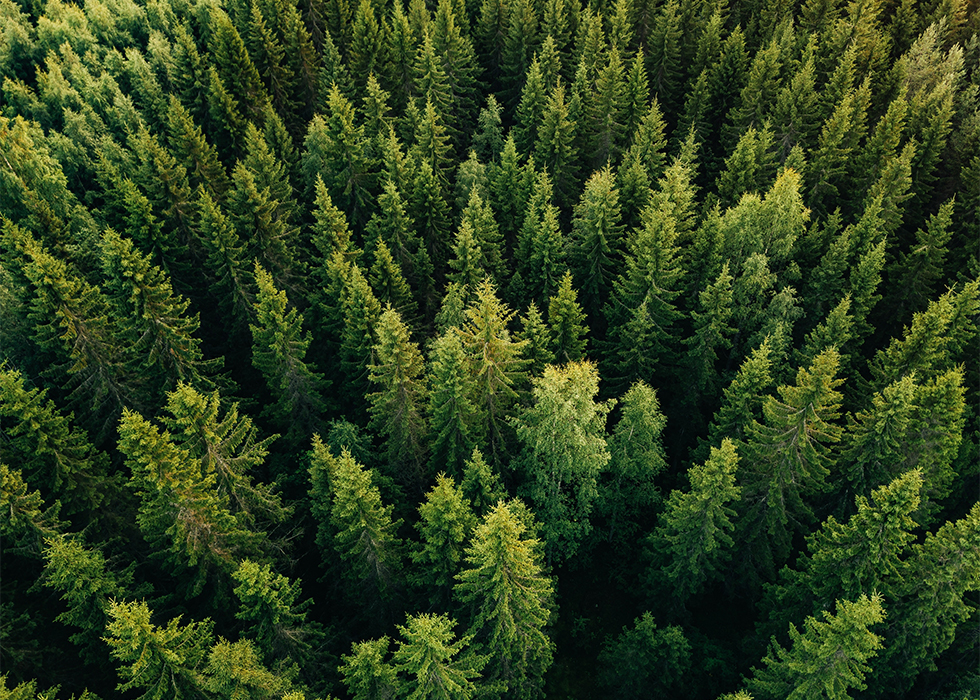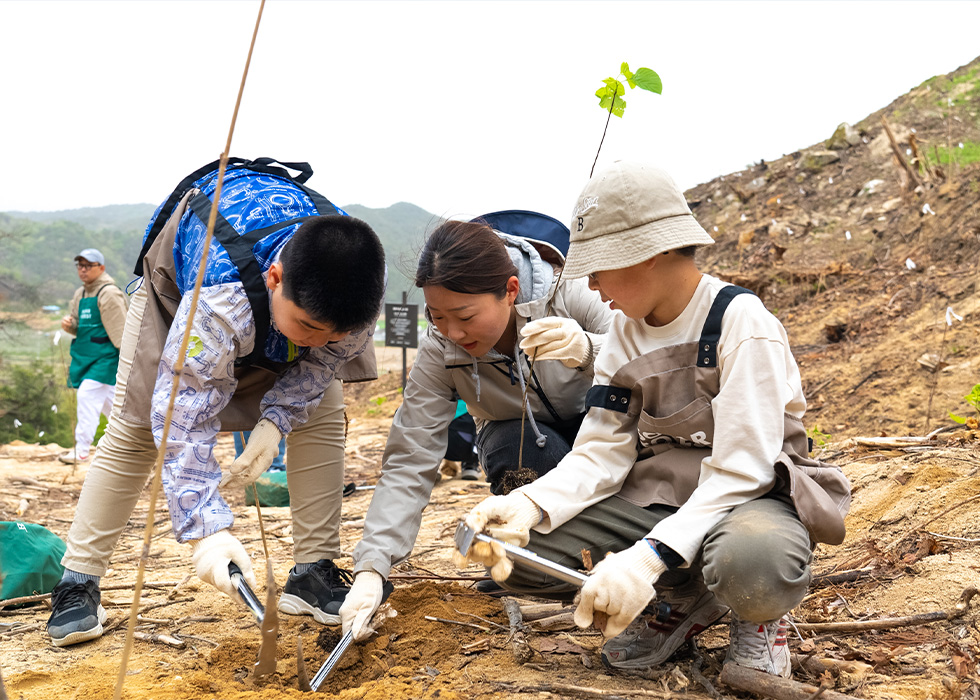The 11th Solar Forest: Hanwha's commitment to forest biodiversity and sustainability

A healthy planet depends on biodiversity, which maintains a delicate balance of life in all its forms, from the tiniest insects to the mightiest of trees. This ecological balance is essential for sustaining life on Earth and ensuring the resilience of both natural and human systems against climate change. Biodiversity is vital for air and water purification, pollination of plants, climate regulation, and soil fertility. Forests, home to more than 80% of terrestrial mammals and plants, play a crucial role in maintaining biodiversity and resilience.
However, biodiversity is under threat from habitat destruction, climate change, pollution, and resource overexploitation. Deforestation and forest degradation, driven by logging, agriculture, wildfires, and urban expansion, significantly reduce biodiversity. In response to these threats, governments, non-profit organizations, and corporations are working together to restore degraded ecosystems, and promote sustainable land use. However, not all reforestation and afforestation projects yield the same results. Effective ecosystem restoration must prioritize native, diverse tree species to foster true biodiversity.
Embodying this commitment to ecological restoration, Hanwha planted its 11th Solar Forest in April 2024. This initiative replaced a diverse array of indigenous tree species in Uljin, an area on South Korea’s East Sea coast that was severely impacted by a forest fire in 2022. By restoring forest ecosystems like this one, Hanwha aims to foster a resilient and sustainable wilderness that will thrive for generations to come.

Monoculture versus biodiversity
Reforestation aims to breathe life back into landscapes scarred by wood cutting or wildfire, restoring the natural canopy that once thrived. Afforestation is the practice of planting new trees in areas previously barren of forests — such as deserts, industrial zones, or lands once dedicated to grazing and agriculture. To be effective, reforestation and afforestation efforts must introduce an entire ecosystem: the tree species, undergrowth, and animals that made the forest robust and unique. In a healthy forest, an ecosystem is a biodiverse community of living organisms in conjunction with the non-living components of their environment, interacting as a system.
But too often forests are replanted with just one or two species of trees, a practice known as monoculture, common in plantations where trees are grown for harvest. Monoculture planting is less effective than biodiverse forests in achieving crucial outcomes like carbon absorption, habitat creation, and soil health. Research indicates that monoculture forests can have significant negative environmental impacts, including soil productivity decline, biodiversity reduction, and heightened susceptibility to pests and diseases due to species uniformity. In contrast, biodiverse forests better adapt to changes and disturbances, ensuring long-term sustainability and resilience against climate change.
Studies point to four crucial outcomes that highlight why biodiversity is important to consider when reforesting: carbon sequestration, soil health, resilience to environmental stress, and water and air quality. A recent study from the University of Alberta demonstrates that biodiversity can increase carbon storage in natural forest soils. Restoring natural forests is the best way to remove atmospheric carbon and combat global warming. Biodiversity also improves forest soils. As the leaves, bark and dead wood fall to the ground and decompose, they create a rich loamy earth for future tree growth. Natural species diversity is linked to drought and storm resistance, reducing the overall risk of long-lasting damage. Finally, biodiversity has been shown to improve water and air quality for local communities, enhancing overall quality of life.
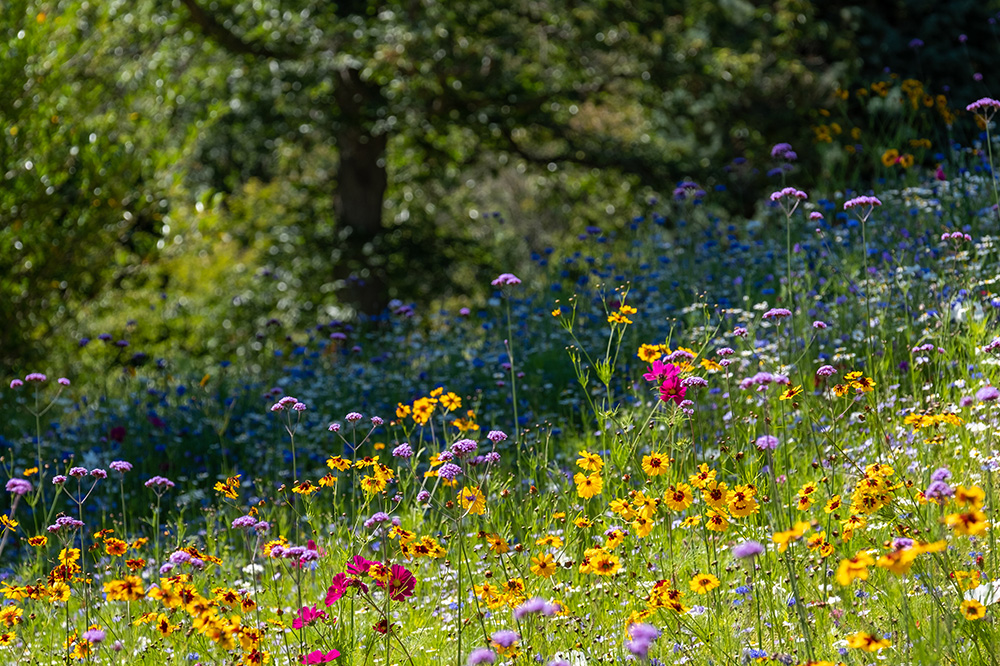
A new beginning
The Hanwha Solar Forest initiative is dedicated to fostering sustainability by planting biodiverse forests. Since its inception in 2012, the program has successfully planted a total of 11 forests comprising around 540,000 trees, covering 1.48 million square meters across South Korea, China, and Mongolia.
The 11th Solar Forest brings hope to Uljin, an area NASA satellites determined was one-third the size of Seoul, approximately 17,000 hectares (66 square miles). The fire razed more than 300 homes and forced more than 7,000 people to evacuate. The reforestation of the area marks a significant step in the recovery process.
Taking into account original habitat and soil conditions, various native tree species were planted, including 7,500 tulip and oak trees, as well as other endangered species like the Abies Koreana, a fir native to the higher mountains of the Korean peninsula. The Uljin Hanwha Solar Forest restores an ideal home for the endangered long-tailed goral, a species of wild goat, along with birds and other wildlife.
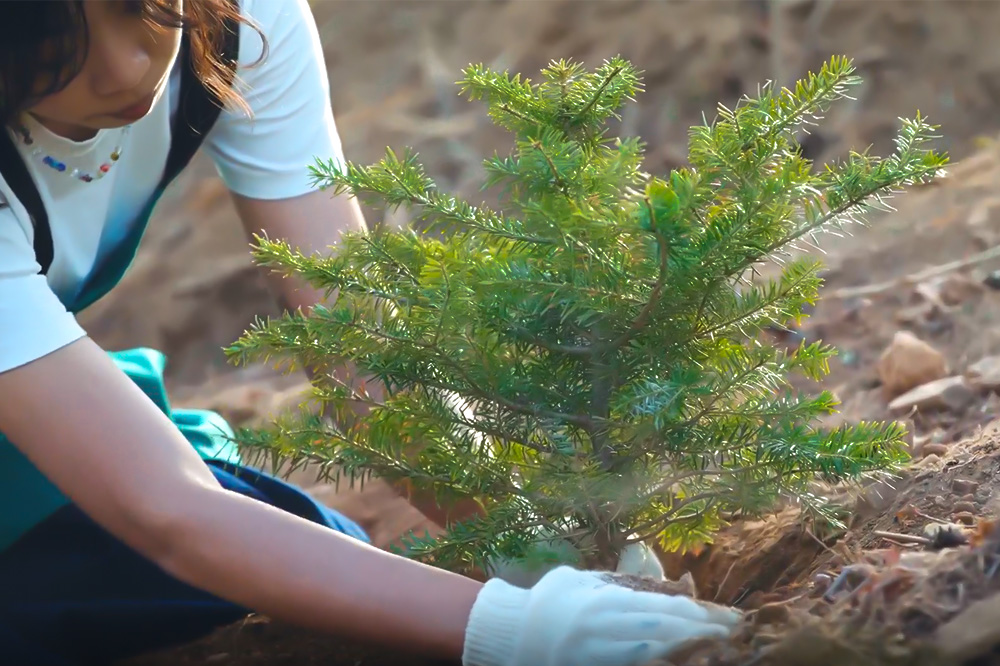
A volunteer plants a tree as part of the 11th Hanwha Solar Forest
What is Hanwha Solar Forest?
Hanwha’s initiative highlights its dedication to promoting a greener future for all. Creating a genuinely carbon-neutral forest by employing solar energy to grow saplings is an impressive achievement that sets a new benchmark for reforestation and afforestation efforts.
Ironically, many reforestation projects may inadvertently release more carbon into the atmosphere. Sapling nurseries, where trees are cultivated until they are ready to be planted in the wild, can consume significant amounts of gas and electricity to power watering mechanisms, keep greenhouses warm, and operate grow lights and other equipment.
Hanwha Solar Forest is different, the definition of a truly carbon-neutral reforestation project. Instead of fossil fuels, the nurseries are powered by Hanwha’s solar panels, supporting clean water, greenhouse temperature and humidity control, and constant lighting to accelerate the maturation of saplings. This means that there are no carbon emissions released into the atmosphere while generating a forest.
In 2023, Hanwha committed to the World Economic Forum's 1t.org initiative, pledging to plant 20 Solar Forests by 2030 in support of the UN Decade on Ecosystem Restoration. Hanwha is elevating its forest restoration efforts to the next level, collaborating with its network of partners and volunteers. By working together, they are fostering a vibrant circle of life that extends beyond merely reducing carbon emissions.
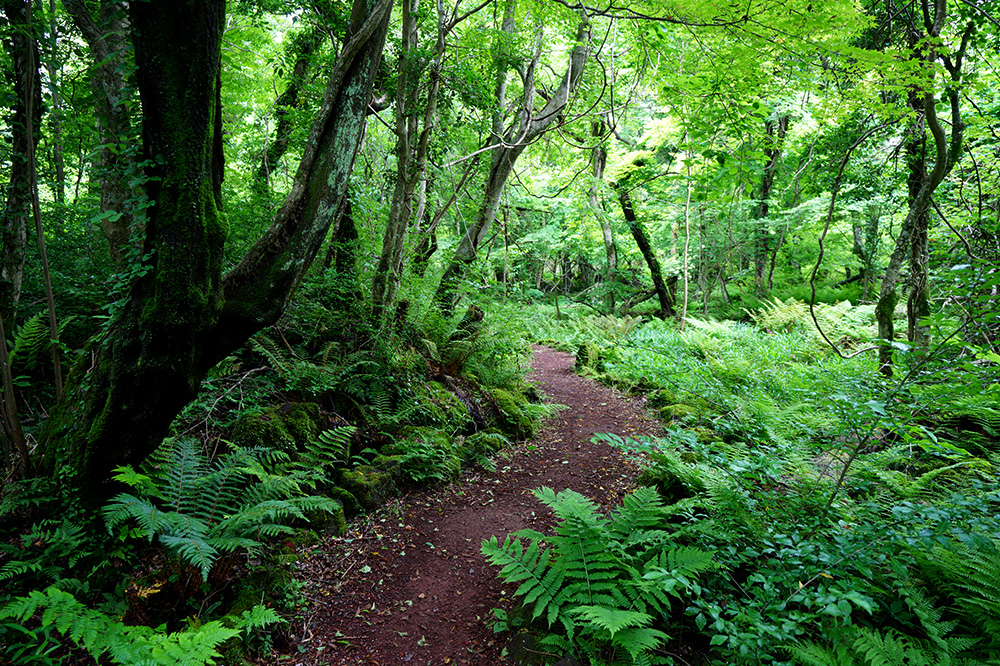
An ongoing commitment
In a world threatened by deforestation and climate change, ecosystems are at risk. Although global reforestation efforts are increasing, planting non-native species or monocultures can harm local biodiversity. Hanwha addresses this by prioritizing biodiversity and native habitat restoration in its reforestation projects, aiming to protect and revitalize valuable ecosystems. Hanwha Solar Forest exemplifies innovative environmental stewardship, demonstrating the power of collaboration and the impact of corporate responsibility in addressing global environmental challenges. Through these efforts, Hanwha is not only restoring ecosystems but also paving the way for a greener, more resilient future, safeguarding the systems that support all life on Earth.
Get the latest news about Hanwha, right in your inbox.
Fields marked with * are mandatory.
- Non-employee
- Employee


